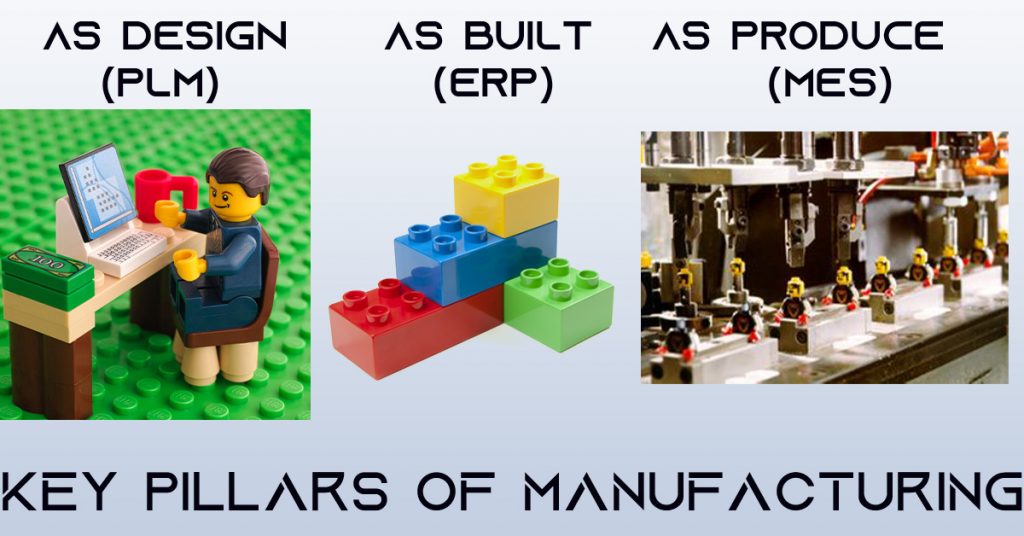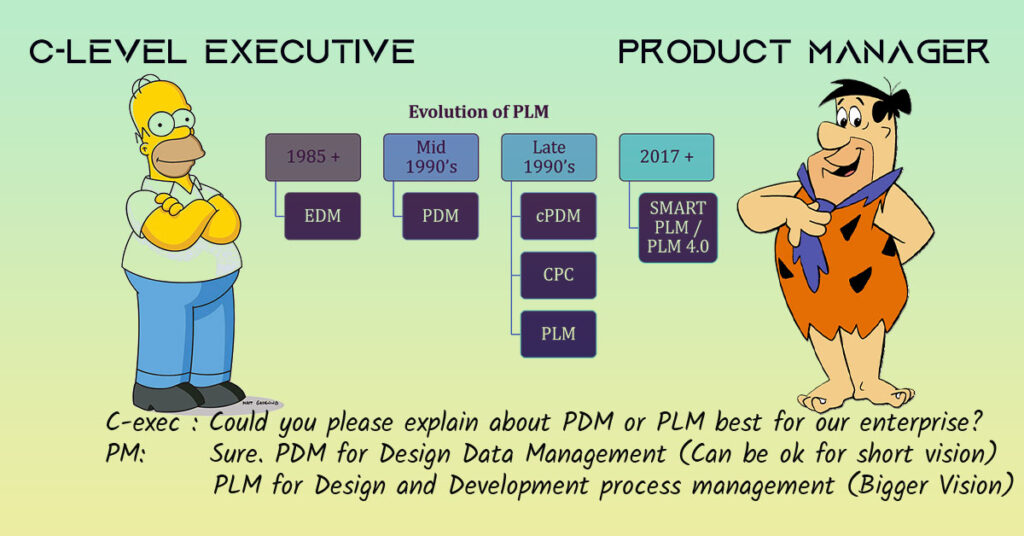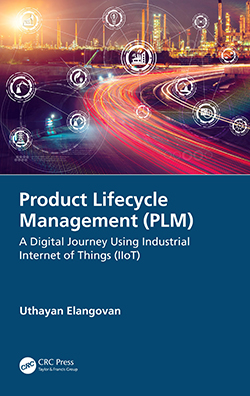What is PLM: Navigating the Product Lifecycle with Precision – in a world of ever-evolving industries, this strategic approach is your compass to effective product management.

- Introduction:
- Defining PLM: The Cornerstone of Efficient Product Management
- PDM: The Fundamental Core of PLM
- The Significance of PLM Across Industries
- The Key Stages of the Product Lifecycle and PLM’s Pivotal Role
- The Business Benefits of Implementing PLM Systems
- Key Players in the PLM Market
- Career Path for Graduates and Professionals
- Conclusion:
Introduction:
Efficient management of products from their inception to retirement is not just a goal; it’s a necessity in the fast-paced world of modern product design and development in the manufacturing industries across the globe. Product Lifecycle Management (PLM) is the strategic approach that makes this journey not only manageable but also a source of competitive advantage. In this comprehensive article, we will dive deep into the world of PLM, beginning with its fundamental definition and the core concept of Product Data Management (PDM). We will explore PLM’s significance across various industries, dissect the key stages of the product lifecycle, and delve into the pivotal role PLM plays in each phase. Additionally, we will unravel the tangible and intangible business benefits that come with implementing PLM systems. To provide a holistic view, we will highlight key players in the PLM market and offer guidance for those considering a career in this dynamic field.
Defining PLM: The Cornerstone of Efficient Product Management
At its core, PLM stands for Product Lifecycle Management. It represents a systematic approach that encompasses the entire journey of a product, commencing from its initial conception and design, progressing through manufacturing, distribution, and ultimately concluding with the product’s end-of-life phase. PLM serves as the central repository and framework for managing all facets of a product’s lifecycle.
PDM: The Fundamental Core of PLM
Before we embark on a comprehensive exploration of PLM, it’s essential to grasp the concept of Product Data Management (PDM). PDM constitutes the foundational pillar of PLM. PDM primarily revolves around the management and organization of product-related data and documents. This encompassing task includes everything from design specifications and engineering drawings to bills of materials (BOMs) and manufacturing instructions. PDM systems are the bedrock upon which PLM stands, ensuring data integrity, version control, and accessibility.

The Significance of PLM Across Industries
PLM is a versatile concept, with its profound implications resonating across a multitude of industries, spanning from aerospace and automotive to consumer electronics and fashion. Its significance becomes abundantly clear when viewed through the lens of specific industries:
1. Aerospace and Defense
In the aerospace and defense sector, where precision and compliance are non-negotiable, PLM systems are the linchpin for managing complex projects, ensuring regulatory adherence, and fostering collaboration between diverse teams engaged in the development of intricate products such as aircraft and defense systems.
2. Automotive
For automotive manufacturers, PLM is the driving force that streamlines product development, accelerates time-to-market, and fosters seamless collaboration between design, engineering, and manufacturing teams. This synergy yields well-designed, cost-effective vehicles that resonate with consumers.
3. Electronics
In the dynamic realm of electronics, where product lifecycles are often measured in months rather than years, PLM becomes the compass that guides companies through the labyrinth of market trends and evolving component specifications. It facilitates swift adaptation and efficient management of ever-changing electronic landscapes.
4. Fashion and Apparel
The fashion industry, a bastion of rapid change, finds a reliable ally in PLM. Brands entrust PLM to manage collections, forge partnerships with suppliers, and optimize the design-to-production pipeline, resulting in timely delivery of fashion-forward products to discerning consumers.
5. Healthcare
In the healthcare sector, where precision and regulatory adherence are paramount, PLM ensures the efficient development and management of medical devices and pharmaceuticals. It provides the much-needed compass for navigating complex regulatory requirements and upholding stringent quality standards.
6. Energy and Utilities
In the realms of energy and utilities, PLM plays a vital role in designing, maintaining, and optimizing energy production and distribution systems. It minimizes downtime, enhances safety, and optimizes the overall efficiency of energy infrastructure.
7. Industrial Equipment
Manufacturers of industrial equipment find a strategic partner in PLM. It enables them to optimize design, minimize production costs, and ensure equipment meets the stringent safety and performance standards inherent in this sector.
8. Consumer Goods
For companies in the consumer goods space, PLM is the enabler of product innovation. It empowers them to respond promptly to shifting consumer preferences and dynamic market demands, thus maintaining a competitive edge.
The Key Stages of the Product Lifecycle and PLM’s Pivotal Role
The product lifecycle comprises several distinct stages, each presenting its unique challenges and demands. PLM emerges as the guiding star that illuminates the path through each of these stages:
1. Conception and Design
At the outset of a product’s journey, PLM fosters collaboration between designers and engineers, ensuring that product concepts align with feasibility and customer requirements. It further aids in managing design iterations, simulations, and prototypes, effectively nurturing ideas from inception to reality.
2. Development and Testing
As the product takes shape, PLM systems step in to facilitate efficient development processes, ensuring that the product adheres to stringent quality and regulatory standards. Testing results and design modifications find a home within the PLM environment, ensuring transparency and accountability.
3. Manufacturing and Production
The transition from design to manufacturing is a critical juncture in the product lifecycle. PLM systems shine in this phase by overseeing bills of materials, work instructions, and production schedules, streamlining processes, minimizing errors, and ensuring efficiency in production.
4. Distribution and Sales
Efficient supply chain management, logistics, and order processing are integral components of PLM. They ensure that products reach consumers promptly and in the required quantities, enhancing customer satisfaction and optimizing distribution costs.
5. Service and Maintenance
PLM extends its reach beyond the point of sale by assisting in the management of service and maintenance requirements. It tracks product performance, manages spare parts, and optimizes maintenance schedules, contributing to prolonged product life and customer satisfaction.
6. End-of-Life and Sustainability
In the final leg of the product lifecycle, PLM continues to serve a pivotal role. It supports responsible product disposal and recycling efforts, contributing to sustainability objectives. Additionally, it provides valuable data for future product improvement initiatives, creating a closed-loop approach to product development.

The Business Benefits of Implementing PLM Systems
The adoption of PLM systems yields a plethora of tangible and intangible benefits that can significantly impact an organization’s profitability and competitiveness:
Tangible Benefits
- Reduced Time-to-Market: PLM expedites product development processes, slashing the time required to introduce products to the market. This agility is especially advantageous in industries characterized by rapid shifts in consumer preferences.
- Cost Reduction: By optimizing design and manufacturing processes, PLM drives cost savings. Efficient resource management, material usage, and waste reduction translate into lower production costs.
- Enhanced Product Quality: PLM leaves no room for compromise when it comes to product quality. It meticulously ensures that products meet and exceed rigorous quality standards, effectively reducing the likelihood of defects and costly recalls.
- Improved Collaboration: Collaboration is at the heart of PLM. It facilitates seamless communication and cooperation among multidisciplinary teams, resulting in better-designed products and shorter development cycles.
- Regulatory Compliance: In industries subject to stringent regulations, PLM emerges as a trusted ally. It meticulously tracks and documents compliance throughout the product lifecycle, mitigating the risks associated with non-compliance.
Check out our Publication on “Product Lifecycle Management”

Intangible Benefits
- Culture of Innovation: PLM nurtures a culture of innovation within organizations. It provides tools and frameworks for creative thinking, idea generation, and experimentation, fostering an environment conducive to groundbreaking discoveries.
- Knowledge Preservation: With PLM, knowledge is not lost with employee turnover. It captures and preserves institutional knowledge, ensuring that valuable insights and expertise remain within the organization.
- Competitive Advantage: Companies that embrace PLM are better equipped to adapt to market changes, maintain a competitive edge, and respond swiftly to evolving customer demands.
- Customer Satisfaction: High-quality products delivered on time invariably lead to greater customer satisfaction and loyalty, bolstering brand reputation and profitability.
- Sustainability: PLM lends itself seamlessly to sustainability initiatives. It provides data and insights for eco-friendly product design and end-of-life recycling programs, enabling organizations to fulfill their environmental responsibilities.
Key Players in the PLM Market
The PLM software market boasts several prominent players, each offering unique features and capabilities tailored to specific industry needs. Here are some key players in the PLM landscape:
Here’s a high-level summary of some key PLM providers:
- Siemens PLM – Teamcenter: Known for its comprehensive PLM suite, Teamcenter is widely used in aerospace, automotive, and manufacturing industries.
- Dassault Systems PLM – ENOVIA: Dassault Systems offers ENOVIA, a collaborative PLM platform popular in aerospace, automotive, and high-tech industries.
- PTC PLM – Windchill: Windchill by PTC is favored in the industrial, high-tech, and medical device sectors.
- Oracle Agile PLM: Oracle’s Agile PLM caters to various industries, including electronics, pharmaceuticals, and consumer goods.
- SAP PLM: integrates with SAP’s broader suite of enterprise solutions and is commonly used in manufacturing and process industries.
- Aras Innovator: Aras Innovator is an open-source PLM solution, gaining popularity in the automotive and electronics sectors.
- Autodesk PLM: Autodesk Fusion 360: Fusion 360 is known for its CAD/CAM capabilities and is popular among product designers and engineers.
- Infor PLM: Infor PLM serves industries like fashion, food and beverage, and aerospace.
- OpenBOM PLM: OpenBOM is a cloud-based PLM solution focusing on Bill of Materials management.
- Arena PLM: Arena PLM is designed for smaller enterprises and startups, offering a straightforward approach to PLM.
- Propel PLM: Propel PLM emphasizes its integration with CRM and quality management systems.
Each of these solutions possesses its unique strengths and caters to different industry verticals. Organizations contemplating PLM implementation should conduct thorough evaluations to align their specific needs with the most suitable solution.
Career Path for Graduates and Professionals
In an era where the demand for PLM professionals continues to surge across industries, pursuing a career in this field holds the promise of rich rewards. Here is an overview of the career path:
1. Entry-Level Positions
Recent graduates typically commence their journey as PLM analysts or associates. These roles involve tasks such as data management, system administration, and user support within an organization’s implementation team.
2. Mid-Level Positions
With experience, professionals advance to positions such as PLM consultants, PLM project managers, or application engineers. They assume responsibility for overseeing PLM implementations, ensuring system optimization, and collaborating with cross-functional teams.
3. Senior-Level Positions
Seasoned PLM experts can ascend to senior roles such as PLM architects, directors, or executives. In these capacities, they steer the strategic direction of PLM initiatives, aligning them closely with the organization’s overarching business objectives.
4. PLM Consultants
PLM consultants may work for PLM service providers or operate as independent contractors. Their role involves assisting organizations in defining PLM strategies, selecting appropriate software solutions, and executing successful PLM system implementations.
5. Academia and Research
Some professionals opt to channel their expertise into academia or research. In this domain, they contribute to the development of new PLM technologies, best practices, and methodologies, thereby advancing the field.
Conclusion:
In the dynamic landscape of contemporary industries, effective product lifecycle management is not a luxury but a strategic imperative. PLM, stemming from the roots of Product Data Management (PDM), has evolved into a comprehensive approach that traverses conception, design, manufacturing, distribution, and end-of-life phases. Its significance across diverse industries is undeniable, as it fuels innovation, trims costs, and assures product quality and compliance.
The tangible and intangible business benefits arising from the implementation of PLM systems render it a strategic investment for companies of all sizes. Moreover, the array of career opportunities within the realm of PLM makes it an enticing choice for graduates and professionals seeking a fulfilling and dynamic career trajectory.
As industries continue to metamorphose, one thing remains unwaveringly clear: PLM is not merely a solution; it is the cornerstone of triumph in the ever-evolving arena of product development and management. Embracing PLM is not just an option; it is an imperative for organizations poised to thrive in the 21st century and beyond.
As your authorized partner for OpenBOM PLM, Neel SMARTEC specialize in empowering SMEs. We do specialize in PTC Windchill PLM mainly for discrete manufacturing. Discover how we can elevate your product lifecycle management to new heights. Contact us today.
Together, we can achieve excellence in NPD business process automation via product lifecycle management!

